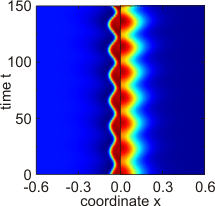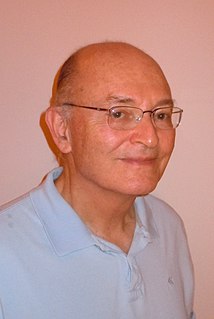Experimental observations of DSs
Today, DSs can be found in many different experimental set-ups. Examples include
- Gas-discharge systems: plasmas confined in a discharge space which often has a lateral extension large compared to the main discharge length. DSs arise as current filaments between the electrodes and were found in DC systems with a high-ohmic barrier, [16] AC systems with a dielectric barrier, [17] and as anode spots, [18] as well as in an obstructed discharge with metallic electrodes. [19]
- DSs experimentally observed in planar dc gas-discharge systems with high-ohmic barrier
- Averaged current density distribution without oscillatory tails.
- Averaged current density distribution with oscillatory tails.
- Semiconductor systems: these are similar to gas-discharges; however, instead of a gas, semiconductor material is sandwiched between two planar or spherical electrodes. Set-ups include Si and GaAs pin diodes, [20] n-GaAs, [21] and Si p+−n+−p−n−, [22] and ZnS:Mn structures. [23]
- Nonlinear optical systems: a light beam of high intensity interacts with a nonlinear medium. Typically the medium reacts on rather slow time scales compared to the beam propagation time. Often, the output is fed back into the input system via single-mirror feedback or a feedback loop. DSs may arise as bright spots in a two-dimensional plane orthogonal to the beam propagation direction; one may, however, also exploit other effects like polarization. DSs have been observed for saturable absorbers, [24] degenerate optical parametric oscillators (DOPOs), [25] liquid crystal light valves (LCLVs), [26] alkali vapor systems, [27] photorefractive media, [28] and semiconductor microresonators. [29]
- If the vectorial properties of DSs are considered, vector dissipative soliton could also be observed in a fiber laser passively mode locked through saturable absorber, [30]
- In addition, multiwavelength dissipative soliton in an all normal dispersion fiber laser passively mode-locked with a SESAM has been obtained. It is confirmed that depending on the cavity birefringence, stable single-, dual- and triple-wavelength dissipative soliton can be formed in the laser. Its generation mechanism can be traced back to the nature of dissipative soliton. [31]
- Chemical systems: realized either as one- and two-dimensional reactors or via catalytic surfaces, DSs appear as pulses (often as propagating pulses) of increased concentration or temperature. Typical reactions are the Belousov–Zhabotinsky reaction, [32] the ferrocyanide-iodate-sulphite reaction as well as the oxidation of hydrogen, [33] CO, [34] or iron. [35] Nerve pulses [11] or migraine aura waves [36] also belong to this class of systems.
- Vibrated media: vertically shaken granular media, [37] colloidal suspensions, [38] and Newtonian fluids [39] produce harmonically or sub-harmonically oscillating heaps of material, which are usually called oscillons.
- Hydrodynamic systems: the most prominent realization of DSs are domains of convection rolls on a conducting background state in binary liquids. [40] Another example is a film dragging in a rotating cylindric pipe filled with oil. [41]
- Electrical networks: large one- or two-dimensional arrays of coupled cells with a nonlinear current–voltage characteristic. [42] DSs are characterized by a locally increased current through the cells.
Remarkably enough, phenomenologically the dynamics of the DSs in many of the above systems are similar in spite of the microscopic differences. Typical observations are (intrinsic) propagation, scattering, formation of bound states and clusters, drift in gradients, interpenetration, generation, and annihilation, as well as higher instabilities.





















